In the last several decades, yoga has become known as a panacea. Stressed out? Do yoga. Want to lose weight? Yoga’s the solution. Having trouble sleeping? Do a few poses at night. But does yoga actually address every health issue?
Though regular yoga is wonderful for most individuals, it’s worth considering any health issues or injuries prior to diving into a routine. Few individuals refrain from yoga even with sprains or chronic illnesses—and one of those is high blood pressure.
If you have high blood pressure and enjoy yoga, the good news is: no need to quit! But you must take a little more care. Certain positions may make you dizzy, lightheaded, or give your heart a lot of extra beats. That does not mean you can’t do yoga—it just means you’ll need to be a bit more careful.
Is Yoga Safe if You Have High Blood Pressure?
Yes, for the most part, yoga is safe—even with high blood pressure. That said, there are a few poses and styles you’ll want to steer clear of:
- Fast-paced flows
- Inversions (poses where your head dips below your heart)
These poses can sometimes spike your heart rate or make breathing difficult. Inversions, especially, raise your risk of such complications as a stroke—so they’re best avoided if your blood pressure is high.
Key Tip: Remain attuned to your breath. If you begin to feel lightheaded or winded, stop, rest, and omit the pose if necessary. Always listen to your body.
Can Yoga Lower Blood Pressure?
Absolutely! Just because you’re dealing with high blood pressure doesn’t mean yoga is off-limits. In fact, the right poses can help lower it.
Benefits of regular yoga:
- Reduces stress and tension
- Improves mind-body connection
- Promotes deeper, more mindful breathing
- Enhances overall wellness
Tip: Before you begin, talk to your doctor. Describe what kind of yoga you’re looking at and how often you will practice to understand what’s safe and effective for you.
Yoga Poses to Avoid with High Blood Pressure
High blood pressure doesn’t mean eliminating yoga completely—but some poses, particularly inversions, are best avoided:
- Headstand
- Handstand
- Shoulder Stand
- Plow Pose
- Wheel Pose
- Fish Pose
- Downward-Facing Dog
These poses force blood towards your brain, making your heart work harder—something to avoid if you have high blood pressure.
Also avoid:
- Hot Yoga
- Power Yoga
These intense styles can easily raise your heart rate.
Best Yoga Styles for High Blood Pressure
Yoga can soothe the mind and relax tense muscles—both of which help control high blood pressure. Look for slow, gentle forms like:
- Restorative Yoga
- Yin Yoga
- Hatha Yoga
- Iyengar Yoga
Reminder: Pay attention to your breath. If it feels shallow or rushed, stop and reset.
Tips for Practicing Yoga with High Blood Pressure
Yoga helps you become more aware of how you feel in your body and mind. Use that awareness to guide your practice.
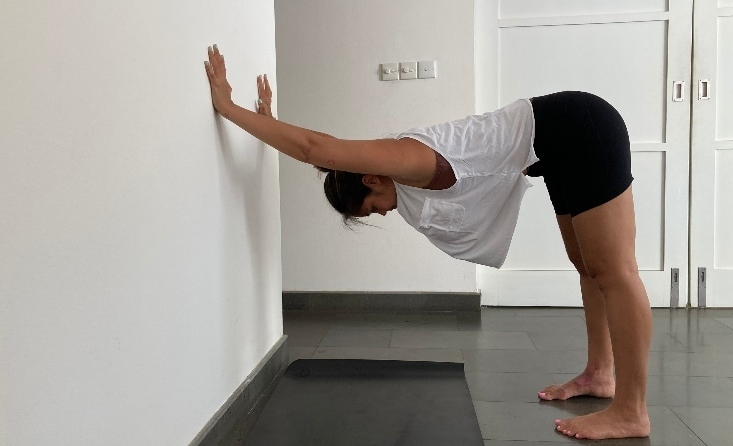
Tips:
- Modify your poses:
If Downward Dog makes you dizzy, do it against a wall, keeping head and heart level in an upside-down “L” shape. - Use care with forward bends:
Standing or seated forward bends can cause dizziness. Keep your head lifted and move slowly. - Skip inversions:
These are demanding and can raise blood pressure. Ask your teacher for softer alternatives. - Select the correct style:
Opt for slow and calming classes like Hatha or Yin. If trying Vinyasa or Hot Yoga, go slow and check in with yourself often. - Pay attention to your breath:
If breathing becomes difficult or your heart races, pause. Aim for slow, steady breathing.
Yoga Positions That Are Good for High Blood Pressure
Most yoga poses are completely safe—especially those that keep your spine upright and avoid inversions. These poses calm the body without stressing the heart.
1. Seated Forward Bend
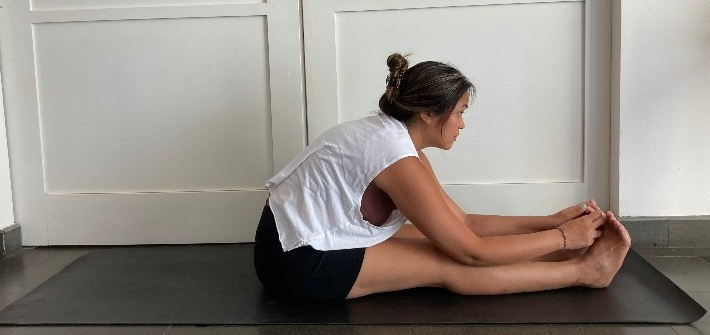
How to do it:
- Begin in Staff Pose with legs straight and feet curled under.
- Take your hands forward to your toes—go as far as comfortable.
- Lengthen your spine and relax your shoulders.
- Keep your head lifted and gaze soft.
- Hold for 5 deep breaths.
2. Bound Angle Pose
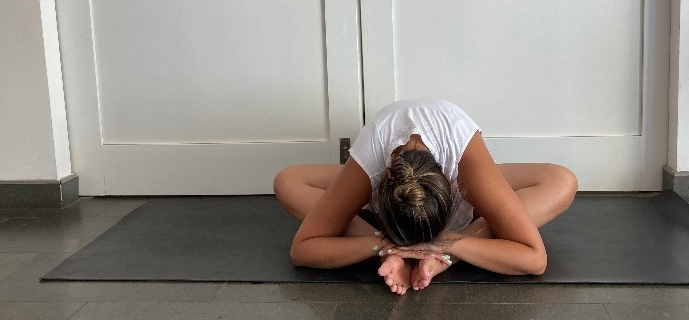
How to do it:
- Sit and bring the soles of your feet together.
- Let your knees drop to the sides.
- Use blocks under knees if needed.
- Keep your spine long, shoulders relaxed, and hands on your feet.
- Close your eyes and breathe for 5–10 breaths.
3. Supported Bridge Pose
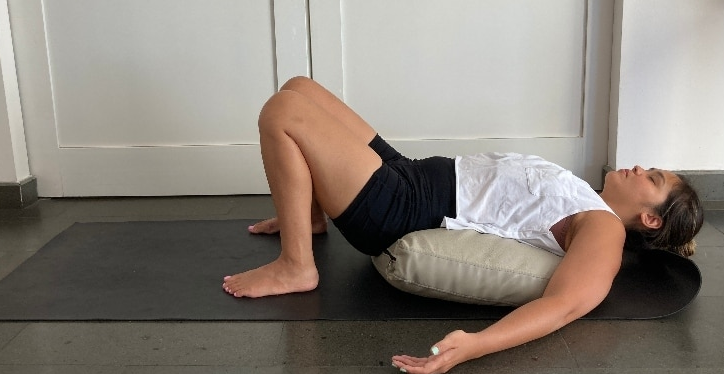
How to do it:
- Lie on your back with knees bent and feet flat.
- Lift your hips and place a block or cushion under your sacrum.
- Let the prop support you.
- Ground your feet, relax your arms.
- Hold for 10–20 breaths.
4. Corpse Pose (Savasana)

How to do it:
- Lie on your back and allow your legs to fall open naturally.
- Place arms by your sides, palms up.
- Soften your breath, relax completely, and close your eyes.
- Stay for at least 5 minutes.
Similar Questions
Does Pranayama decrease blood pressure?
Yes! Breathing exercises soothe your nervous system and help stabilize blood pressure. They also help maintain focus during yoga.
How can I decrease blood pressure naturally?
Prioritize a healthy lifestyle: eat well, exercise, reduce caffeine, avoid alcohol and smoking, and manage stress.
How do I know if I have high blood pressure?
Usually, there are no symptoms. Get regular check-ups. Adults should have it checked at least every two years—or annually after age 40.
Final Thought
Yoga can absolutely be part of your wellness routine, even with high blood pressure. Just be mindful of how you move, avoid poses that don’t serve your body, and stay connected to your breath. With the right approach, yoga can become a safe, soothing tool on your journey to better health.
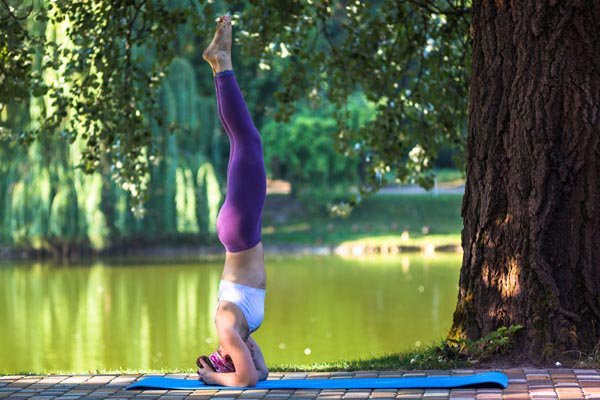
Leave a Reply